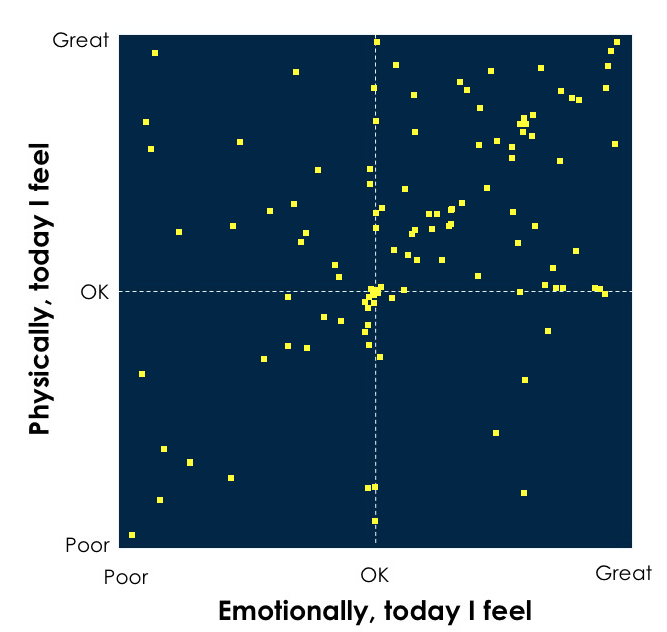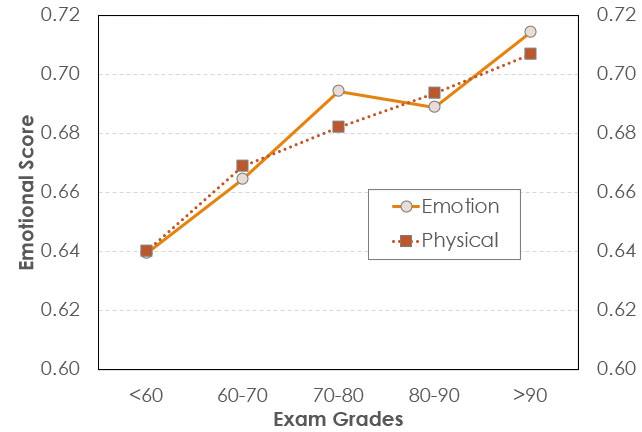One strategy I’ve been using is to include a mechanism for students to share how they’re doing physically and emotionally. I started this long before the coronavirus by asking an image-based question using the engagement software I use in class (Echo360) that asks students “Where on this wellness chart would you put yourself today?”.

Answers are totally voluntary and students can, if they wish, add a note to their dot if they want to share details. Students can’t see whose dot is whose but, as their instructor, I can and it gives me a way to reach out if I note a persistent “poor” response. Communication is key in any relationship and this allows some acknowledgement of the emotional and physical strains my students are feeling.
The emotional and physical wellness are quantified daily as the location (0.0-1.0) of the students’ dots on the x and y axes, respectively. Averaging daily measures of wellness there appears to be a relationship between emotional and physical self-assessments and exam grades as sown below.

More analyses are underway, but this does suggest that if we ignore student’s wellness state we are likely missing a key factor in their ability to academic success.
